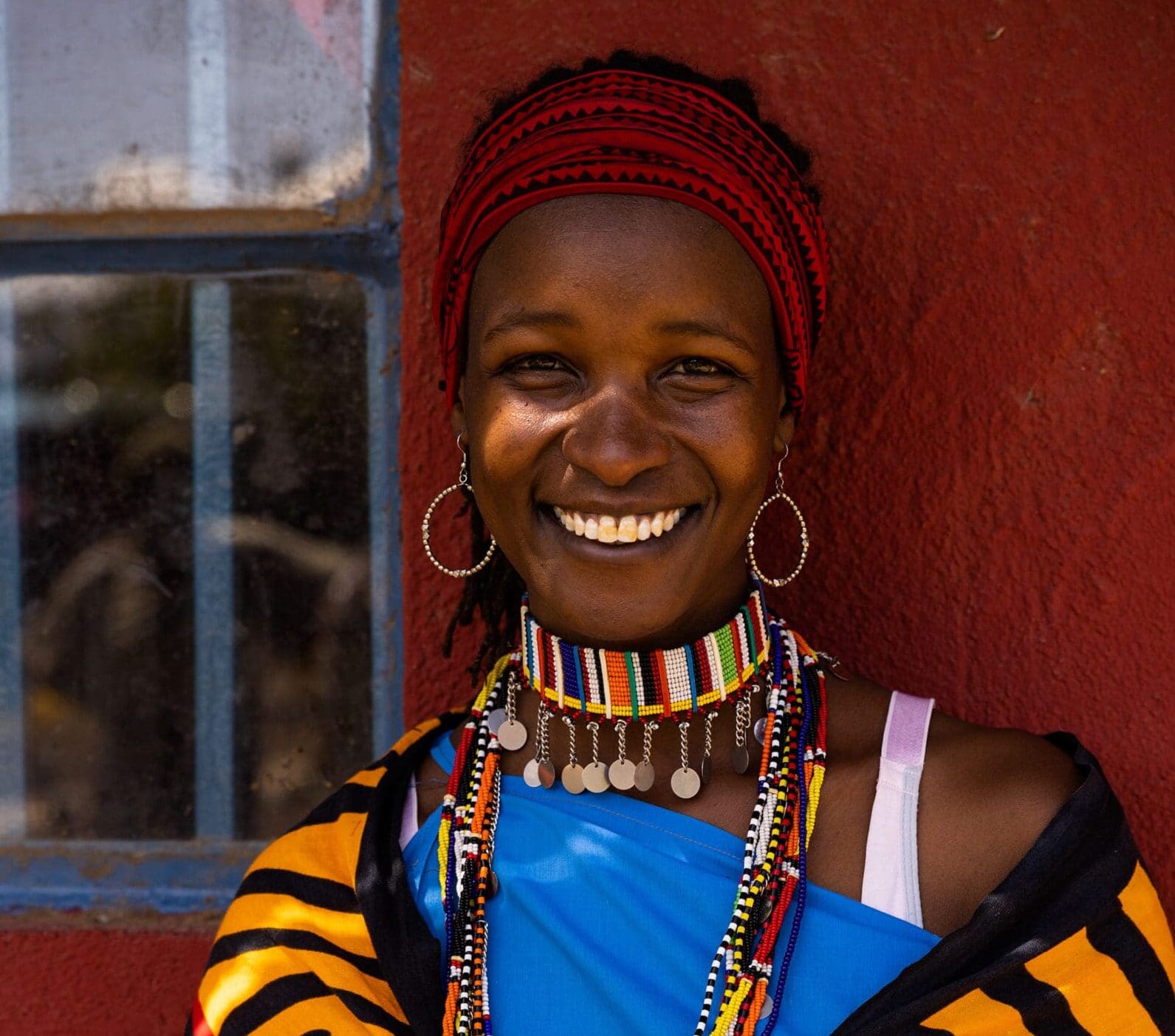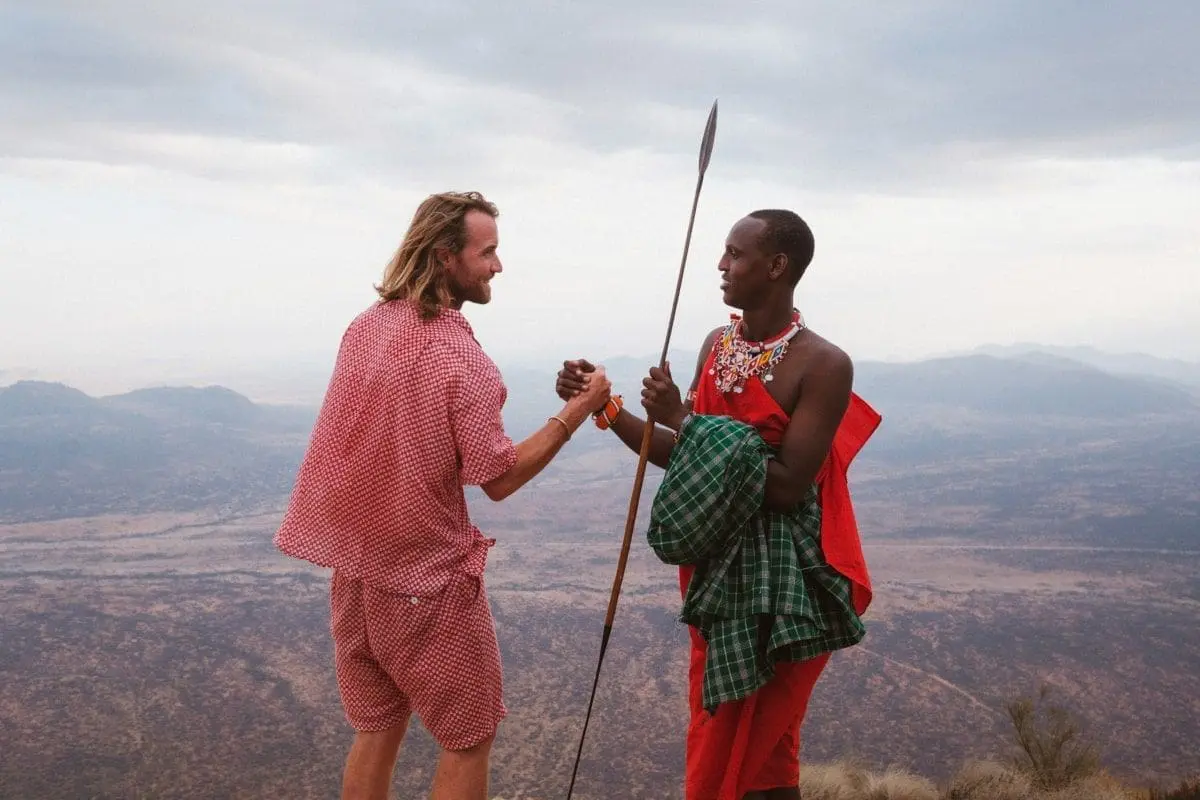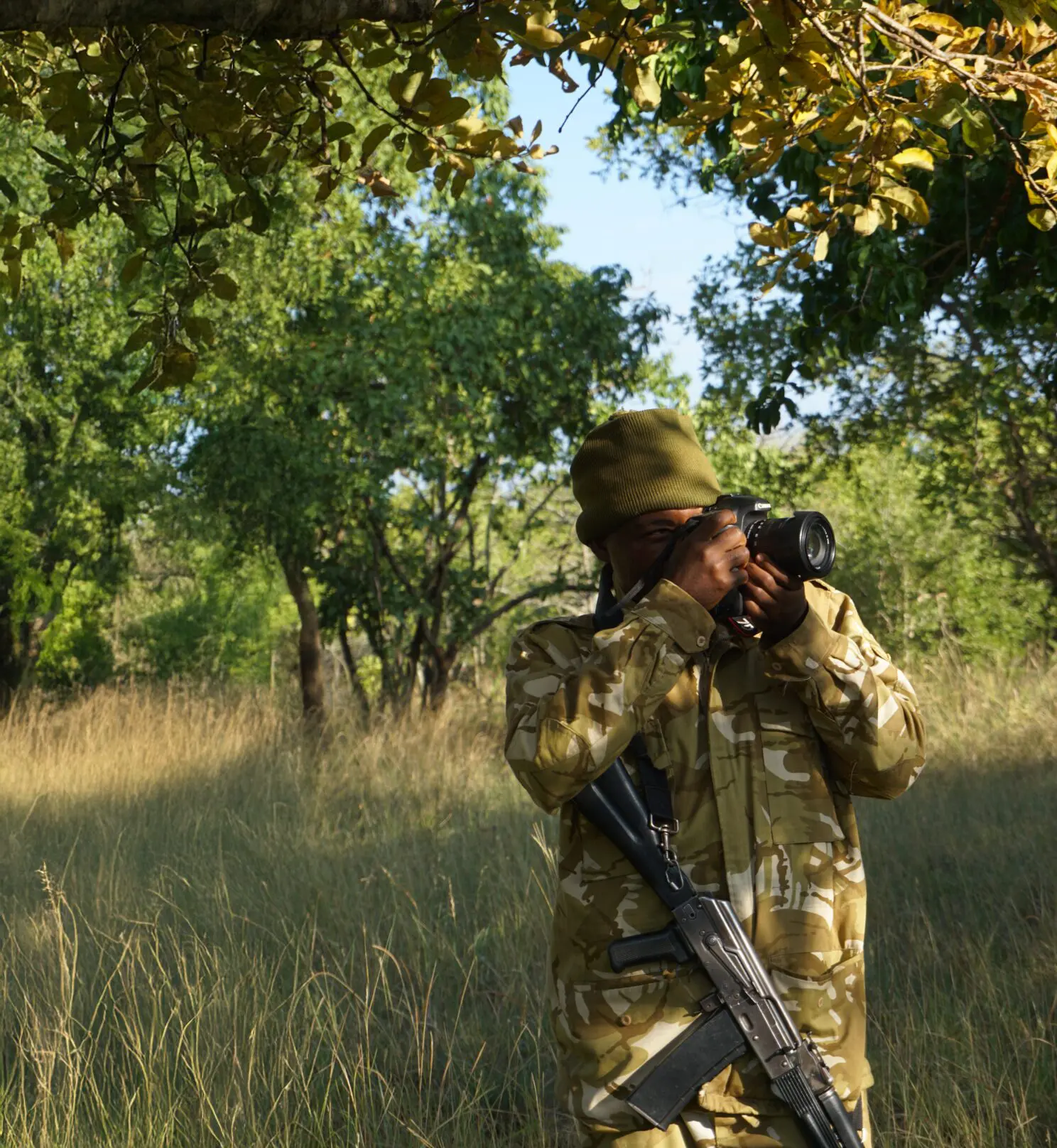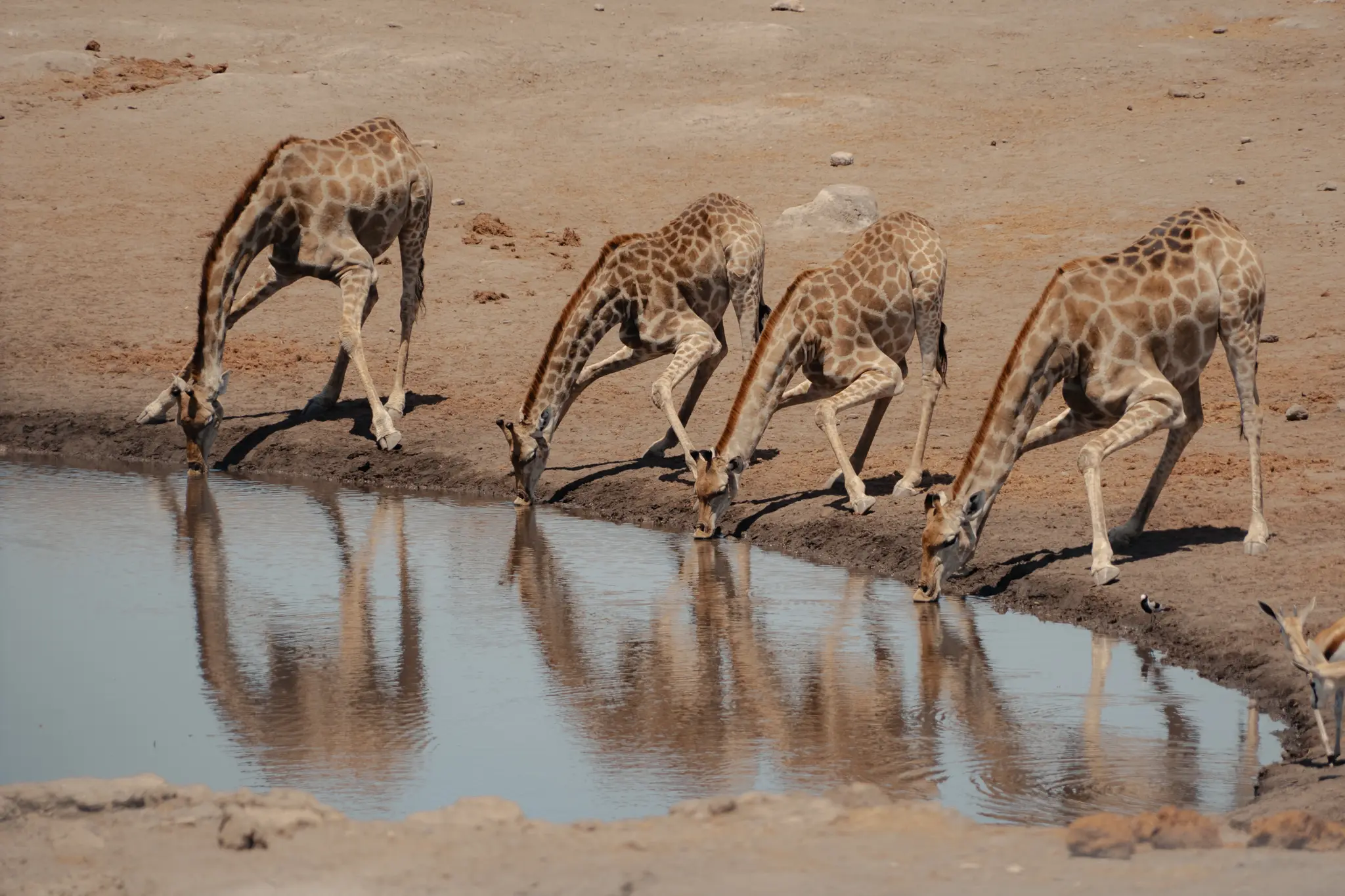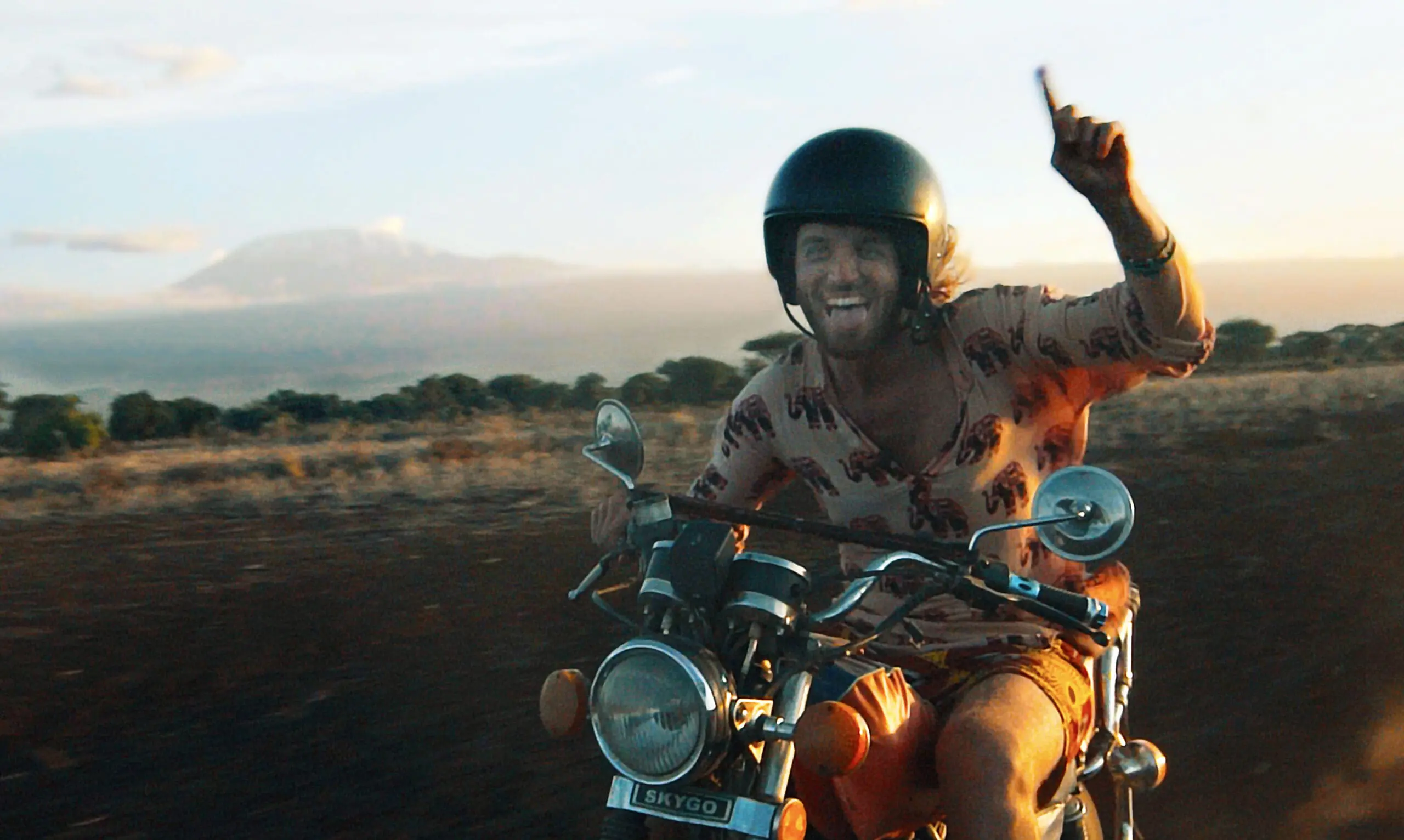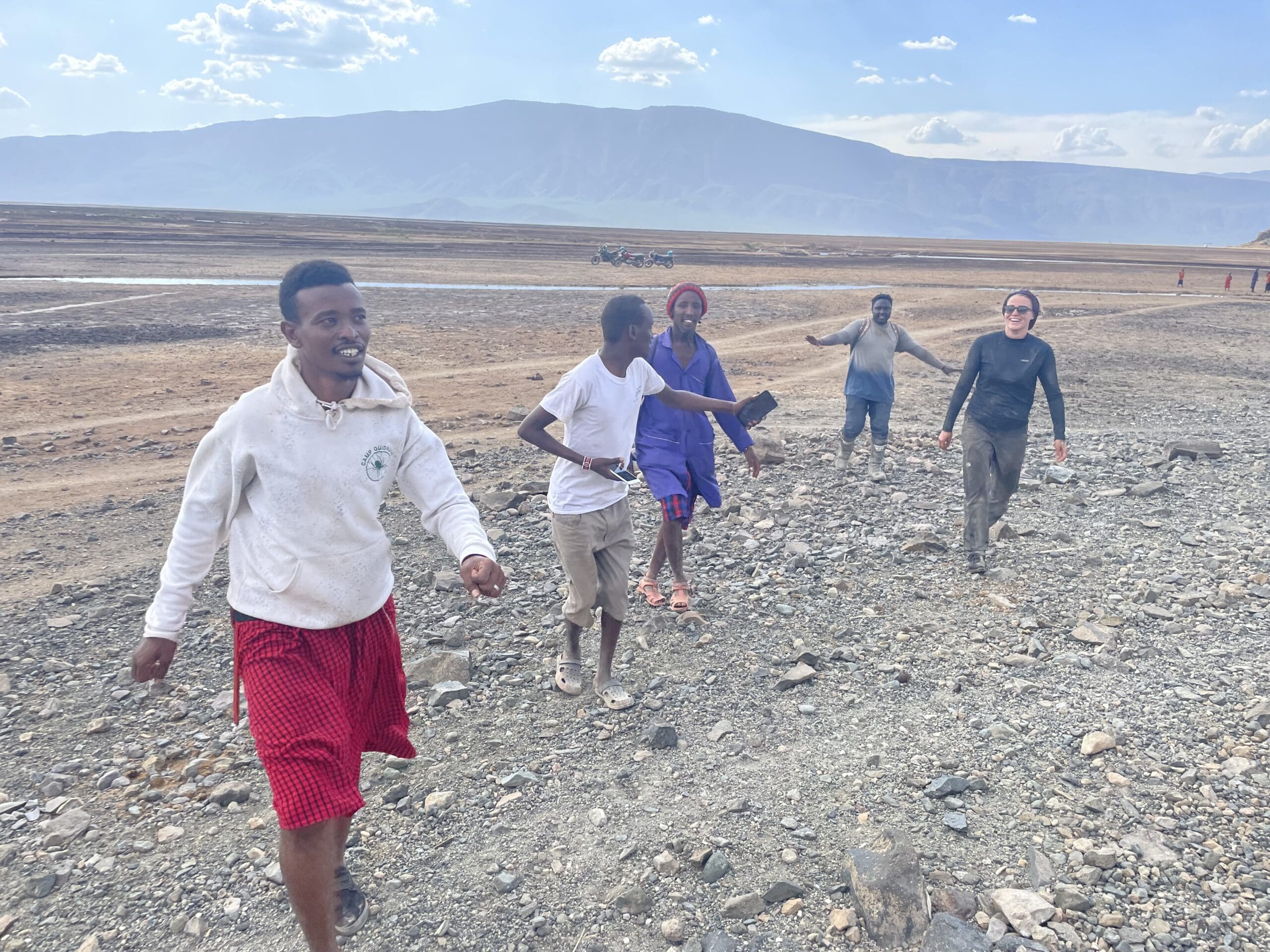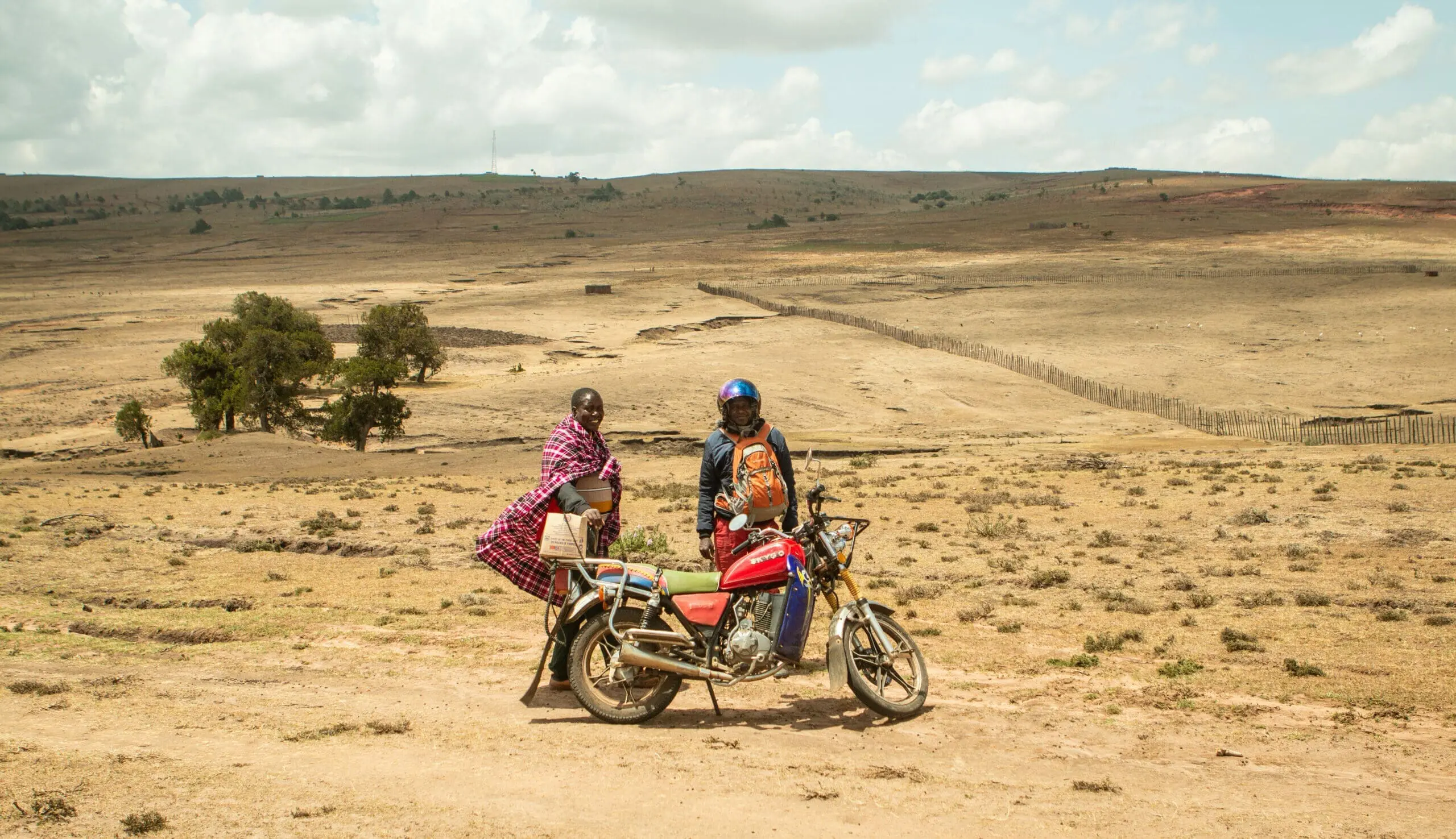The Earth is warming up!
Climate change is (unfortunately) real! We’re here
on the ground in Africa, and the disastrous effects of global warming are unfolding right before our eyes. The consequences are much more severe in African countries than in places like Europe. People are less resilient to extreme weather conditions such as severe droughts or heavy rainfall (think locust plagues!), which can have a massive impact on food supplies and the living conditions of communities.
Although everyone knows that flying isn’t good for the planet, it seems we can’t stop. The world has become a global village, and our own countries feel small and claustrophobic. Travel isn’t great for the climate. Since we, as a travel agency, facilitate travel, it’s especially important for us to take responsibility—
together with you! How do we do that? We make it possible for you to offset your flight emissions!
We offset your trip!
How exactly does that work? To minimise our ecological footprint, we’ve gone on a thorough search for projects in East Africa that give back to our planet and combat climate change. Not big international organisations where we don’t know if the money is going to the right place, but local projects that can even be visited by customers during their travels. We’ve shaken hands with these organisations and started collaborations. When you book a trip with us to Africa, we calculate how much CO2 your journey will emit, and we figure out how many carbon credits we need to purchase from a project to offset the same amount of CO2. A portion of your trip budget then goes towards the carbon credits of one of these heroic projects. You get to choose which organisation your funds go to. Keep reading to make your choice!
Trees, trees, trees
This is where it all starts. Trees absorb CO2 and store it. The enormous deforestation happening worldwide reduces the ability of trees to absorb CO2 from our atmosphere. Deforestation is a huge issue in Kenya, especially as illegal logging takes place for cooking and heating purposes. A tricky problem, of course, because people need to cook and heat their homes. So, how can we ensure trees take their place back in the carbon cycle while having a positive impact on the environment and local communities?
OPTION 1: Mangrove Forests with Mikoko Pamoja
56,492 young mangrove trees have been planted, 117 hectares of mangrove forest are protected, and 9,880 tonnes of CO2 have been stored. (For context: your return flight from Amsterdam to East Africa has emitted 1.5 tonnes of CO2!) Moreover, 498 households benefit from the preservation of these forests. Sounds good, right? These are the numbers for the 'Mikoko Pamoja' project today, and they continue to grow daily.
‘Mikoko Pamoja’ means ‘Mangroves together’, a fitting name for our sustainable partner project that is contributing to the environment by planting mangrove forests in Gazi Bay, on the southern coast of Kenya. Mikoko Pamoja fosters collaboration between local communities, national, and international organisations to achieve three goals, or a ‘triple win’: combating climate change, protecting biodiversity, and improving the living conditions of local communities.
They do this by investing money, donations, and ‘carbon credits’ in both planting and preserving mangrove forests (which act as lungs for the earth and absorb a massive amount of CO2!) and in supporting the surrounding villages. Now, 3,500 residents have access to clean drinking water, and 700 children are provided with school supplies such as books and notebooks. Besides helping the planet—and the people!—there’s another win for us: these mangrove forests along the azure coastline are also stunning natural beauty, and you can kayak through them during your trip in Kenya! Win-win-win-WIN!

OPTION 2: Regreening with Justdiggit!
This project focuses on greening the Earth, restoring ecosystems and biodiversity, and making the land fertile again, allowing farmers to support themselves once more. They do this through water harvesting: managing the sporadic rainfall. An example of this is a project in Kenya where they dig crescent-shaped trenches to allow the rainwater to infiltrate the soil, preventing erosion!
How does it work?
In many African countries, it does rain, but it’s erratic. The rain showers that come are often short and extremely intense. Because the soil is too dry, the water can’t infiltrate, so it instead runs off the land unused.
This causes erosion, and the last bits of fertile soil and remaining vegetation are washed away. That’s why this water needs to be managed: water harvesting. By digging trenches and opening up the soil, the rainwater that falls from the sky can be absorbed directly into the land.
Where there is water, there is life. Or rather: where there is water, there are trees! The seeds present in the soil can germinate with the help of the water, and any remaining vegetation can start to recover. Biodiversity gets room to grow, and local communities can put food on the table again.
OPTION 3: Cookstoves with CO2Balance
Meals need to be cooked, and homes need to be kept warm. We might do this using a gas stove, electric kettle, or central heating, but not everyone has these options. Many rural communities in East Africa don’t have much choice and rely on firewood to cook and heat their homes. This brings numerous drawbacks for both people and nature:
- Firewood doesn’t grow on your back. Trees need to be cut down for this, and this practice greatly contributes to deforestation. While trees actually absorb CO2 and help fight climate change.
- These trees are being chopped down, often as a full-time job performed mostly by women and children.
- Fires that are lit indoors result in massive amounts of smoke. Not exactly healthy, and the numbers speak for themselves: around four million children die annually from air pollution caused by these fires.
CO2Balance is addressing this issue. They invest in facilitating turbo-efficient cookstoves that can also heat the living room:
cookstoves. Since fewer trees need to be cut down to prepare a meal, each cookstove saves 2 tonnes of CO2 per year – about the same amount emitted by a return flight from Amsterdam to East Africa! Additionally, these cookstoves produce no harmful smoke – leading to less child mortality – and local residents can better use their time. Time that many residents previously spent chopping and hauling wood can now be used to, for example, build a business. And children? They can return to school!
SUSTAINABLE TRAVEL... is more than just carbon compensation
Responsible travel and making a real impact on your surroundings goes beyond simply offsetting your flight emissions. Just like "fast food" and "fast fashion," there's also "fast travel": travel based on consumption. Seeing as many places as possible in the shortest time for the lowest cost: not good for the environment or local communities! ‘Slow travel’ is what we’re fans of. How do you do it?
- Take one long trip per year, rather than several short ones.
- Book a direct flight: this saves a lot of CO2 emissions!
- Travel over land or water, instead of taking domestic flights. Look out the window and you’ll see so much more!
- Try not to cover too much ground or tick off too many countries in a short time. Instead, get to know one place really well.
- Travel consciously. Look around, talk to people, listen, share, be curious.



